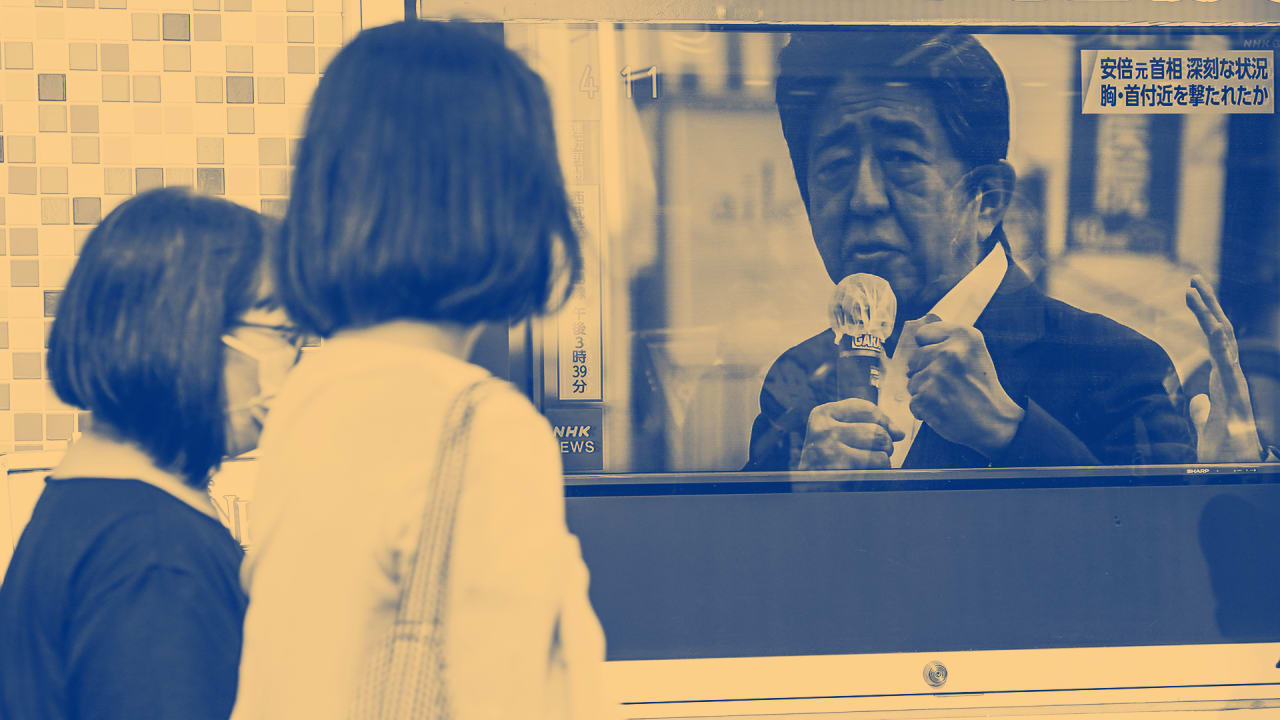[ad_1]

The world is in shock today after Japan’s longest-serving prime minister Shinzo Abe was murdered while giving a speech in Nara, Japan, a historic city near Kyoto. Abe, who was 67 years old, was endorsing a fellow Liberal Democratic Party member, campaigning in the country’s upcoming national elections, when he was shot by a man with a homemade gun and a grudge against a “specific organization,” Japanese police said.
Global leaders are now mourning the loss of a towering figure in international politics, one who sought to transform Japan from a nation bound by a pacifist constitution into a heavyweight world power. But two years after Abe’s resignation as premier, his legacy remains divided. Few can argue about the size of the impact he has had on his country, but some disagree on where he’s succeeded and where he’s failed.
There is less to trumpet, for example, when it comes to Abe’s “Womenomics” scheme, which sought to mobilize women as an economic resource in Japan. The program, as its name suggests, was inspired by the larger “Abenomics” policy, meant to spur the country’s sluggish economy. However, in 2020, seven years after the push began, Womenomics had fallen far short of its stated goals, with its greatest triumph—the rise in female employment by several percentage points, or several million women overall—being mostly rewound by the COVID-19 recession.
Granted, it was no small undertaking. Since the end of World War II, women in Japan had been relegated by gender to household duties, such as keeping the home, bringing up children, and caring for elderly parents, while the men took part in the country’s slingshot growth known as the “economic miracle,” in which Japan became the world’s second-largest economy in the postwar-to-Cold-War period. With that came salaryman culture, in which men showed overwhelming loyalty to their companies and offered women almost no help with housework. As Japan’s status rose, so did societal tensions as women began to see motherhood and housewifery as a trap—a dynamic that contributed to Japan’s lagging birth rate and aging population.
Womenomics was partly meant to expand that gradually shrinking workforce. And it meant dismantling a number of infrastructural barriers to entry, including a shortage of daycare—with waiting lists of thousands of kids in some places—by loosening rules for opening new daycares, as well as attacking gender discrimination in hiring with new government laws. Aside from policy, its greatest impact may simply have been the effect of Abe, as prime minister, publicly refuting the centuries-old entrenched ideals of women staying at home, in a country where traditionalism runs strong and deep.
Yet the program was plagued by setbacks, showing the country was still resistant to women’s climb up the corporate ladder. Womenomics aimed to put women in 30% of management positions by 2020; yet, by that year, it had achieved just 10.7% of board positions for Japan’s biggest public companies, well below the Organisation for Economic Co-operation and Development’s average of 26.7%. Meanwhile, it ranked 120th (out of a total 156) in the World Economic Forum’s 2021 index of countries moving to close the gender gap.
Now in 2022, the gender gap is still great, with women working less than men by over 10 hours per week, the widest margin in the G7 (which includes Canada, France, Germany, Italy, the United Kingdom, and the United States). And of those who worked less than full-time, 41% cited “compatibility with household chores” as ideal employment in a survey by Japan’s Ministry of Health, Labor, and Welfare.
Despite promising to help women “shine,” Womenomics was perhaps a speckled piece in Abe’s tapestry, having far less lasting success than other Abenomics programs. Nevertheless, it’s noteworthy as one of the first major pushes by Japanese government to mobilize a largely dormant population of 65 million women in the country. And it may well have paved the way for progress down the road, even if that’s slow to come.
[ad_2]
Source link

